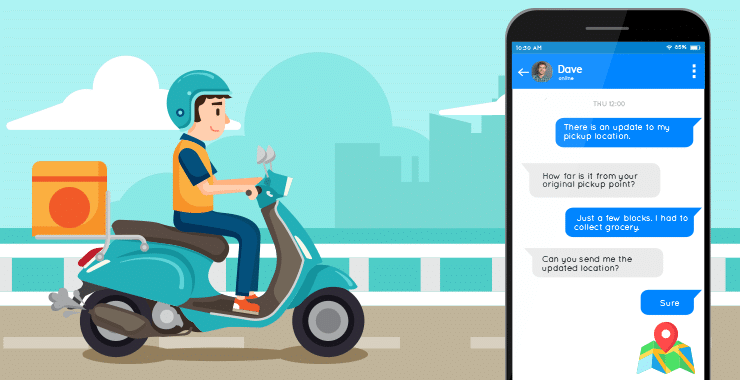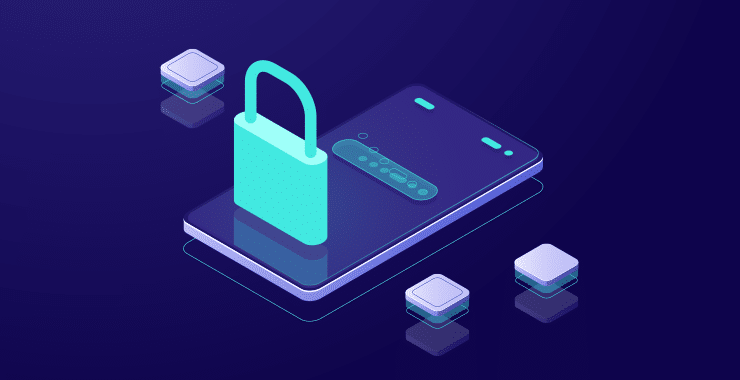Table of Contents
In-app Messaging for On-demand Apps: Fix the Communication Gap

Tell me one Uber ride when the driver did not call you to confirm your location or to get directions to it. In on-demand app development, people often overlook the most important aspect—the human players. No matter the amount of technology that goes into on-demand app development, at the end of the spectrum are a set of humans connected over the app. On-demand apps acts as a platform that connects drivers, delivery persons, professionals, handymen, etc. with the customers.
Technologists often believe that an on-demand apps doesn’t need any sort of P2P communication to work and entail app2app communication will suffice. But that is often not the case. While technology is perfect, humans aren’t and that goes for all of us. For example, location services on-demand apps talk to can detect the precise location of the rider and the app can communicate the same as pickup location to the driver app over a data connection. What if the rider starts walking from the pickup location while the driver is coming? The driver will arrive and will find nobody there and have to resort to call the rider to learn his updated location and drive there.
On-demand Apps Need Convenient and Transparent Communication
On-demand services were meant to be perfect no waiting, no software or technical issues, no dialing, no miscommunication but… You need in-app messaging to overcome human flaws and technology limitations.
If we talk about popular app-based taxi hailing services, there are three streams of in-app communications possible.
1. Customer and Driver
2. Rider and App Support
3. Driver and App support
If we talk about food delivery or hyperlocal delivery channels like local grocery delivery, we can add one more actor; vendor and three more streams of communication.
1. Customer and Vendor
2. Delivery Person (Driver) and Vendor
3. App Support and Vendor
Delivering support to customers, vendors, and drivers at the same time may lead to break in support quality and app ratings. Indeed, disappointing moments can turn around an unfriendly experience. A quality in-app messaging experience makes way for simple, approachable and uncomplicated communications.
In all cases of communication, when things go wary, on-demand app providers will contact the customer directly for most transparency. Even if the delivery is delayed, transparent communication enabled by app to app communication can do a great deal of damage control and save your app rating from going down.
Messaging in On-demand Apps is a Potential Cost Saver
On-demand tend have standardized supply or low average order values (AOV). For instance, Lyft synchronizes rides that are identical and the supply remains homogeneous. Doordash delivers food orders in low average order value, say, $10 plus taxes, tariffs, and tips, putting it around $17. All in all, they can afford dedicated support desk with 100s of staff at every location.

Since on-demand services are in low average order value, in-app messaging can come out as a potential cost saver. Support staff can coordinate all players of an on-demand marketplace — vendors, drivers, and customers; and bring transparency in the entire communication process.
If you have been operating an on-demand app or in this case any app, you know sending SMS is not exactly cheap. In-app messaging can be a lifesaver for the startups trying to save every penny to support sustenance.
What About Privacy?
If your on-demand app solution shares the phone number of the driver and passenger with each other, you may end up in a major privacy problem. A frustrated passenger may use the same phone number to threaten the driver afterwards. There are many cases where a driver was found harassing a female passenger by endlessly calling her number. Such cases when reported may not go well with privacy advocates and may subject your organization for negligence, which may lead to bad press and lawsuits.

On-demand providers have tried to overcome this problem by masking users actual number with a proxy number but again calling doesn’t go well with the framework of on-demand app solutions.
In-app messaging can envelope the need to share phone numbers and save you from privacy issues. On-demand app solutions providers can easily monitor chats happening over their platform if a user reports and can take action against reported drivers, vendors even customers.
In-app Messaging Makes Way for Premium Support
On-demand economy relies upon the timing of demand; when and where a customer wants his delivery at—integrated in-app messaging will deliver “on-demand” communication with the following benefits.
- “humanize” the driver and get fewer bookings cancelled
- Privacy and a unique ID
- reduce calls and SMS and cut cost
- Monitor communications for any mishap
- Sending location without revealing identity
On-demand + In-app Messaging = Better, Secure, and Premium Support
In-app messaging facilitates coordination between multiple sides of an on-demand solution and bring about communication transparency to user experience on both supply and demand side of the spectrum. Reduce dialing and terminated bookings, enable your users to communicate openly without compromising their privacy. With the right messaging APIs, you can bring about in-app messaging in your on-demand app solutions in a few easy steps. That is, you can introduce in-app messaging without added hassles to your on-demand app development team.
Tags
